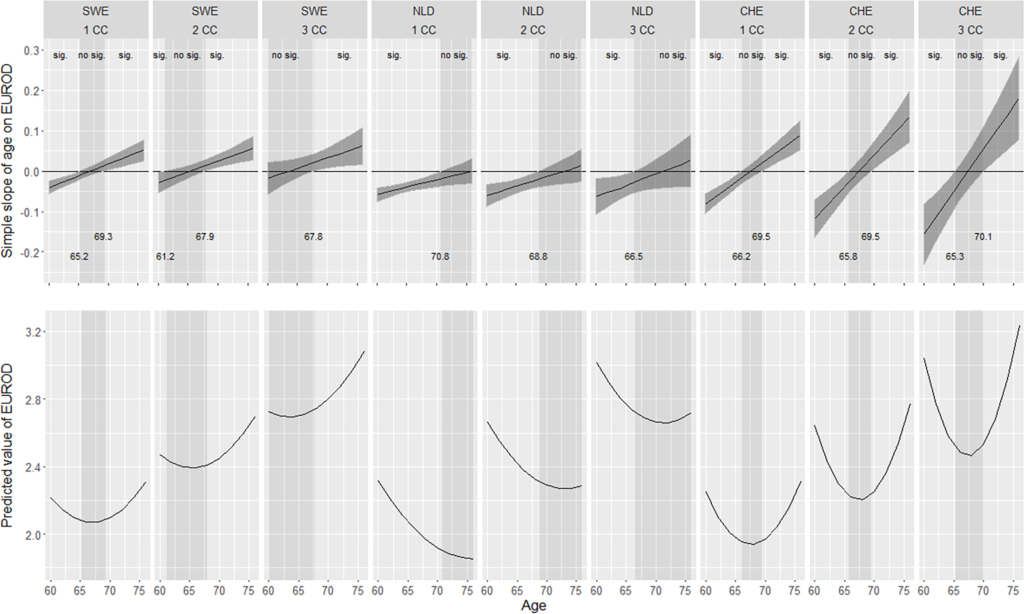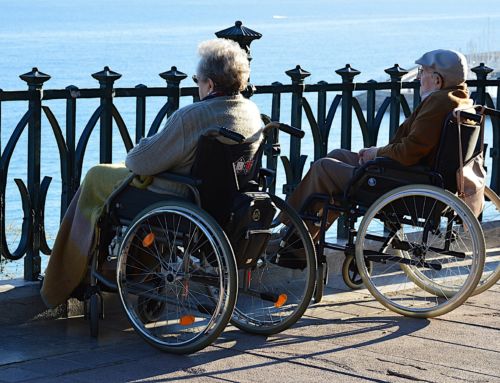International comparisons of trajectories of depressive symptoms in older adults are scarce and longitudinal associations with co-morbid conditions not fully understood. In our study, we provided an analysis of their association and at evaluating potential differences across 10 European countries.
Depressive symptoms and multi morbidities, i.e. the presence of more than one condition, are common in older adults. However, their association and dynamics as individuals age is not fully understood. We aimed at gaining a better understanding of their association and at evaluating potential differences across 10 European countries (Austria, Belgium, Denmark, France, Germany, Italy, Netherlands, Spain, Sweden and Switzerland). We also aimed at demonstrating how sensitive results from statistical models are to analytical decisions and how much can be gained by looking into the data from various perspectives.
Specifically, we estimated trajectories of EURO-D scores, a scale of depressive symptoms, using data from 4 data waves of the SHARE study. To capture the dynamics of multi morbidities, we adjusted the models for time invariant and time varying measures of self -reported multi morbidities. Using the Johnson Neyman technique, we were able to identify the ages at which the associations of co-morbid conditions with these trajectories become more relevant.
International differences in ageing-related trajectories of depressive symptoms emerged. At study entry and over the entire follow up period, Spain, Italy and France were the countries with the highest average number of depressive symptoms, and Denmark the country with the lowest average number of depressive symptoms. In addition, we found that consistently over the entire follow up period, Spain was the country with the highest average number of chronic conditions and Switzerland the country with the lowest average number of chronic conditions.
Figure below depicts predicted mean trajectories of EURO-D scores for the Netherlands, Sweden and Switzerland for 1–3 chronic conditions. These countries’ trajectories exhibited similar patters as other European countries. For example, the Netherlands’ pattern of change was similar to Spain’s, Sweden’s to Austria and Switzerland’s to Belgium, Denmark and France.

We also found that as the number of average multi morbidities reported over time increased, the average number of depressive symptoms at ages 60, 65 and 70, also increased.
Why are our findings important? They matter for several reasons. First, our findings highlight international differences in depressive symptoms of older European adults and hence, identify the need to look into the evolution of depressive symptoms locally, rather than globally. Second, they also inform about the dynamics of depressive symptoms and multi morbidities as individuals age, rather than looking at these processes from a static, cross sectional perspective. Finally, our demonstration of how analytical decisions impact results regarding depressive symptoms trajectories highlights the need of a critical and in depth look into modelling decisions when comparing results across studies and synthesizing literature.
About the authors:
Alejandra Marroig, Instituto de Economia, Universidad de la Republica del Uruguay, Montevideo, Uruguay
Iva Čukić, Centre for Dementia Prevention, University of Edinburgh, Edinburgh, United Kingdom
Annie Robitaille, Department of Psychology, University of Victoria, British Columbia, Canada
Andrea Piccinin, Department of Psychology, University of Victoria, British Columbia, Canada
Graciela Muniz Terrera, Centre for Dementia Prevention, University of Edinburgh, Edinburgh, United Kingdom
The article is based on:
Marroig A, Čukić I, Robitaille A, Piccinin A, Muniz Terrera G (2019) Importance of modelling decisions on estimating trajectories of depressive symptoms and co-morbid conditions in older adults: Longitudinal studies from ten European countries. PLoS ONE 14(4): e0214438. https://doi.org/10.1371/journal.pone.0214438











Leave A Comment